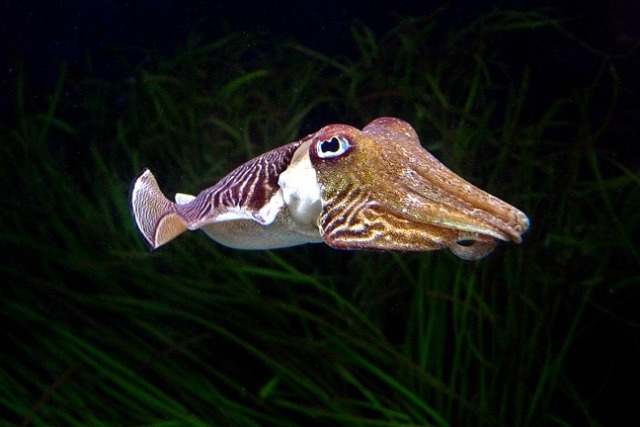by Tim Pearce
The club for species that can pass the marshmallow test has recently gotten a new member: the cuttlefish. Cuttlefish are the first invertebrate known to show self-control.
The marshmallow test examines whether an individual has sufficient self-control to use delayed gratification. In the original marshmallow test, a child could have one marshmallow immediately, or if they were able to wait 15 minutes, they received two marshmallows. Some of the 3- to 5-year-old children waited and got the double treat, indicating that they could delay gratification for a larger reward. Other species such as chimpanzees, crows, parrots, and dogs have passed modified versions of the marshmallow test
We humans think we are special. We form clubs in which we initially believe we are the only member, but then other species creep into those clubs. In times past, humans thought they were the only members of the language club and the tool use club, but now we know many other species are in those clubs.

To examine whether cuttlefish could delay gratification for a better reward, researchers (Schnell et al. 2021) offered them an Asian shore crab (a less preferred food) immediately, or a grass shrimp (a more preferred food) if they were able to wait. The food was offered in two chambers with sliding doors. Before the test, cuttlefish were trained to recognize symbols on the doors that indicated if it would open immediately (a circle) or with a delay (a triangle). Most of the cuttlefish waited 50 to 130 seconds to get the more desirable grass shrimp, comparable to time delays shown by chimpanzees and crows.
Some cuttlefish appeared to move their bodies away from the immediate, less preferred reward. Similar behaviors are seen in humans and other animals (e.g., parrots close their eyes, dogs turn away) as they try to resist temptation while waiting for the better reward.
Furthermore, those cuttlefish that waited longest for their favorite foods also performed best during learning tests. Cuttlefish have good memories and can learn from past experiences.
The standard explanation for ability to use delayed gratification, is that it helps animals with long, social lives. This reasoning doesn’t apply to cuttlefish. They live just two years and are not social, so the benefits of delayed gratification to cuttlefish are less obvious. One possibility is that the evolution of self-control in cuttlefish is related to predator avoidance and camouflage; those that can stay camouflaged longer might avoid detection by predators.
Relevant joke:
What is the most affectionate fish in the ocean?
The cuttlefish!
Tim Pearce is the head of the Section of Mollusks at Carnegie Museum of Natural History. Museum employees are encouraged to blog about their unique experiences and knowledge gained from working at the museum.
Reference
Schnell, A.K., Boeckle, M., Rivera, M., Clayton, N.S. & Hanlon, R.T. 2021. Cuttlefish exert self-control in a delay of gratification task. Proceedings of the Royal Society B, Biological Sciences, 288 (1946): 20203161 doi.org/10.1098/rspb.2020.3161.
Related Content
Ask a Scientist: What is the biggest snail?
Water Bears: Why My Yard is Like the Moon
Extremely Rapid Evolution of Cone Snail Toxins
Carnegie Museum of Natural History Blog Citation Information
Blog author: Pearce, Timothy A.Publication date: June 25, 2021
